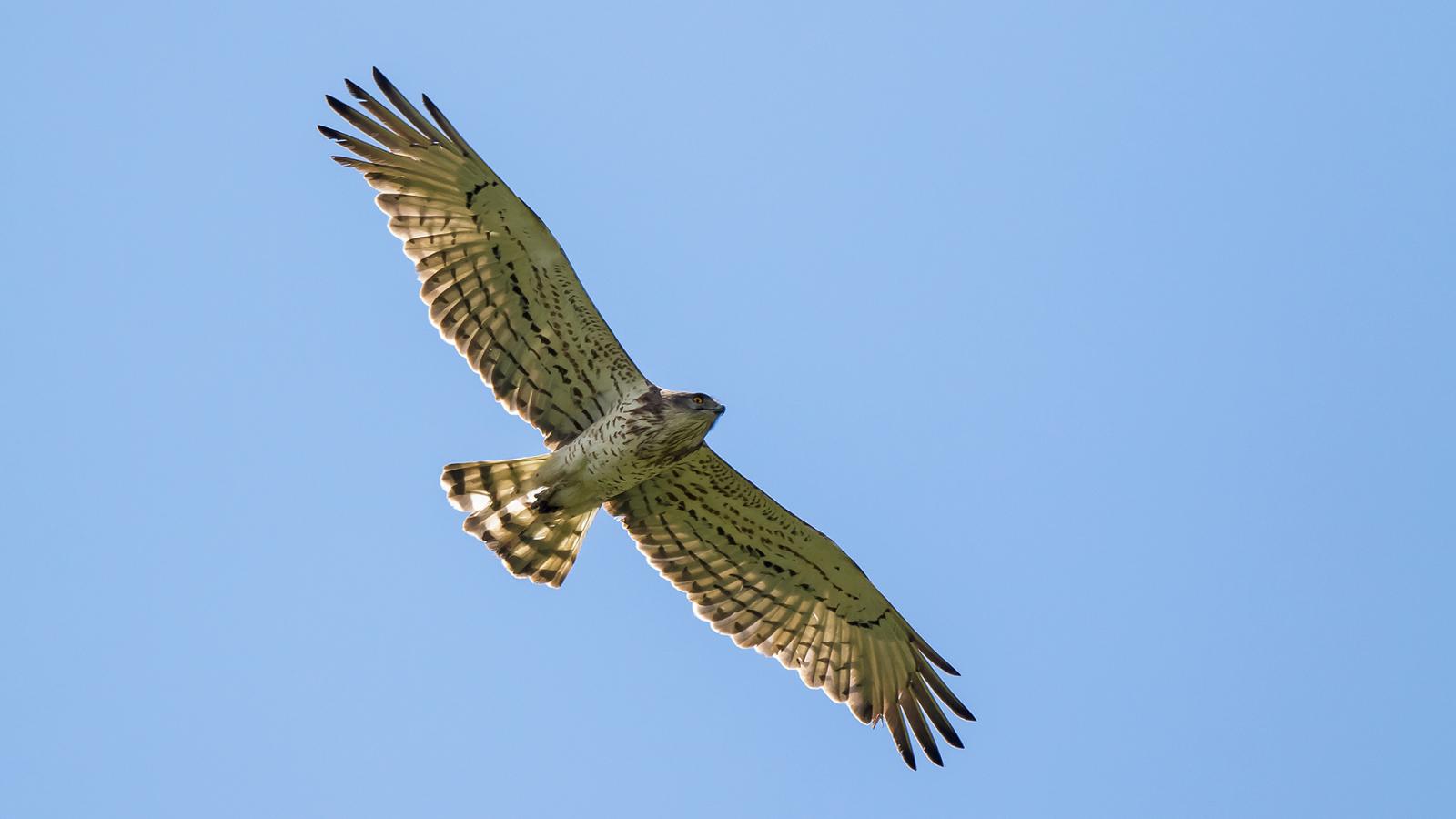Identification
The largest of the raptors that can be seen on Lesvos (except for larger predators that pass by but are rarely recorded). It has long broad wings, a medium-length tail and a protruding head. Adults are white underneath with a dark face (head and neck) and black thin lines along the wings, mottled on the body and thicker lines on the tail. Above is cap brown, sometimes with lighter parts. Young individuals may appear completely white underneath: no or few stripes and no or slightly darkened head. It has yellow eyes, visible only at close range.
Distribution - Habitat
Summer visitor in Europe, up to its central parts, in NW Africa, in Central Asia (up to Mongolia) and a few distinct areas in the Arabian Peninsula. Its distribution in Europe is discontinuous as it is found in the southwestern continent and again in its centraleast and southeastern parts. It overwinters in Africa, in a relatively narrow zone below the Sahara Desert. In the Indian peninsula it has a year-round presence (non-migratory).
It will be seen in a variety of habitats from open wooded areas to areas with no or low vegetation and scattered trees.
Interesting Information
- It feeds (as its name suggests) mainly on snakes (up to 80%!) and less on lizards, rodents, rabbits and frogs
- Its legs are covered with reinforced scales so that it cannot be dangerously bitten by the snakes it captures (although it feeds mainly on non-venomous species) and its fingers are short so that it can handle them effectively
- It flies at heights of usually 20-150 m above the ground, often staying typically in the same spot, and then searches with its acute vision for reptiles

